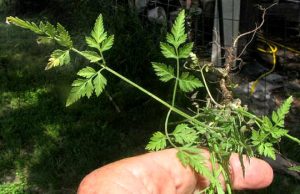I love pulling weeds. Consequently, walking through our small woods, I can’t help myself. If I see beggar’s lice (Torilis arvensis), for example, I yank it out. If I see sticky weed/bedstraw (Galium aparine), it’s history, too. Chickweed, henbit, spurge—they’re all on my list.

Like many native plant gardeners, though, I sometimes have trouble telling the good guys from the bad. Is that a ligustrum seedling peeking out of the soil, or a plant I’d like to keep? It’s often hard to know.
This time of year, we’re likely to find all manner of wildflowers and other forbs coming up on the trails and in our yards. Some, such as Texas baby blue eyes (Nemophila phacelioides), false dayflower (Commelina anomala), and spiderwort (Tradescantia bracteate) began appearing a month or more ago. Windflowers, aka anemones (Anemone berlandieri), will be blooming before we know it.
In contrast to these, a great many other wildflowers are just now forming rosettes or sending up spindly stems. How’s a person to figure out what’s what? Fortunately, there are several online resources that can help.
https://aggie-horticulture.tamu.edu/wildseed/photoalbum.html
https://www.nrcs.usda.gov/Internet/FSE_PLANTMATERIALS/publications/mopmcpu6313.pdf
https://www.nrcs.usda.gov/Internet/FSE_PLANTMATERIALS/publications/capmctn10340.pdf

Written by Susan Hanson, editor of The Loop and SMGA Board Member
